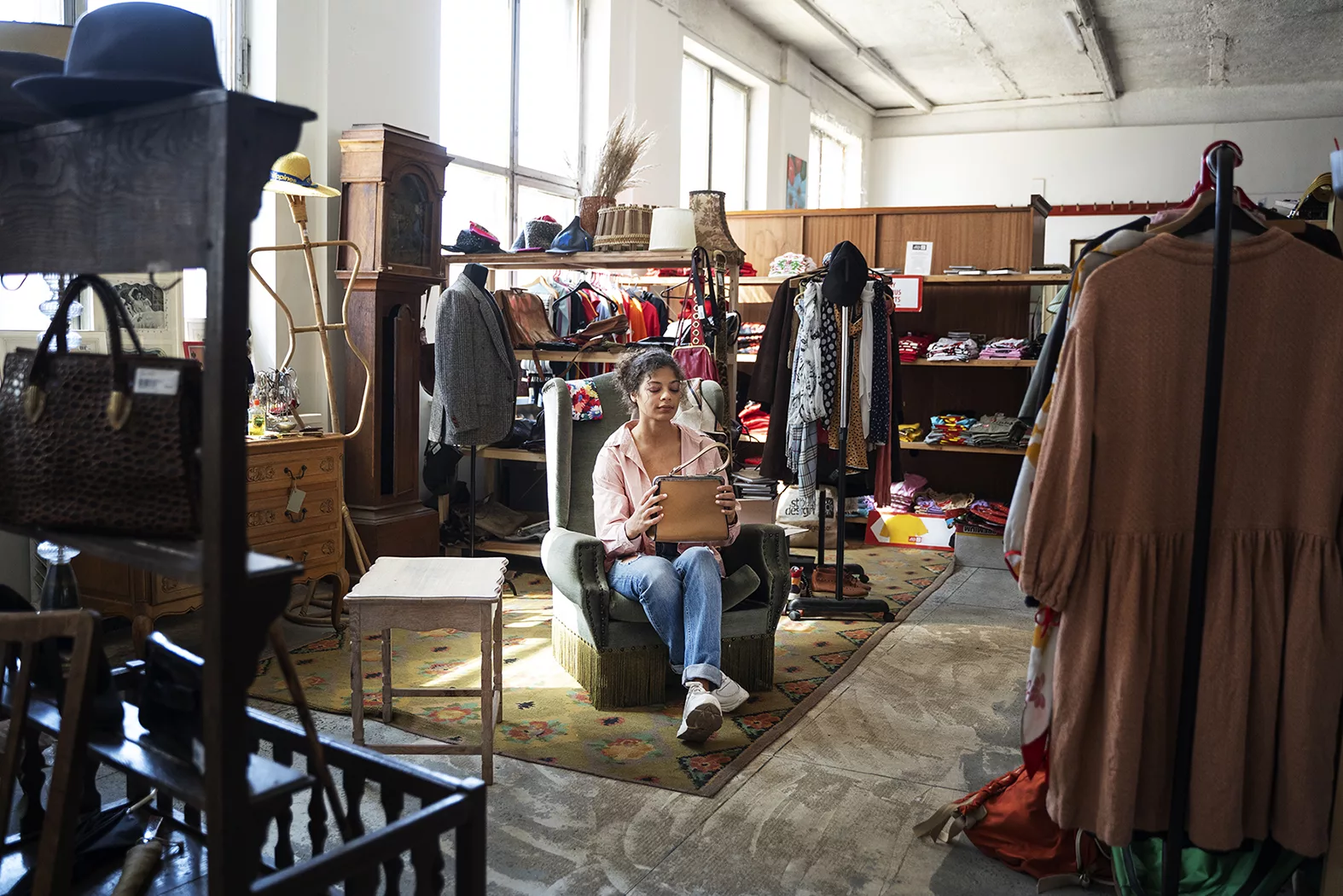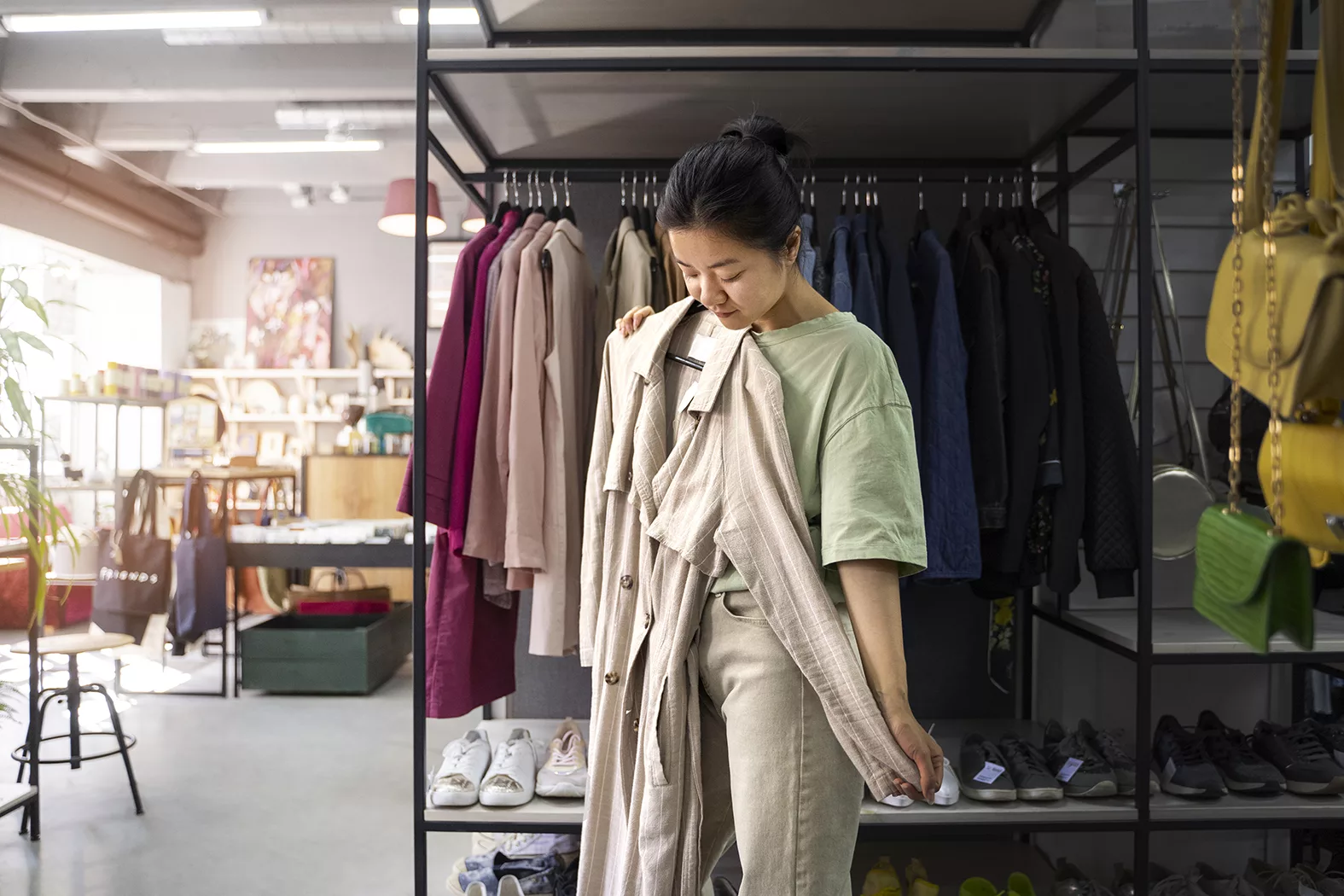Executive Summary
The secondhand market has seen significant growth in recent years, driven by increasing consumer awareness of sustainability, economic considerations, and changing fashion preferences. This white paper aims to analyze current trends in the secondhand goods market, focusing on popular items, seasonal demand, and consumer preferences. By understanding these trends, thrift stores and suppliers can better align their strategies to stay competitive in an evolving market. Additionally, Bank & Vogue is the best partner to connect with suppliers and clients of secondhand goods wholesalers.
Introduction
The secondhand market, once considered niche, has transformed into a mainstream sector. Consumers are increasingly turning to thrift stores, online resale platforms, and consignment shops for their shopping needs. This shift is fueled by a combination of economic, environmental, and social factors. This white paper will explore the key trends shaping the secondhand market and provide insights for thrift stores and suppliers to capitalize on these trends.
Historical Context and Digitalization Impact
Secondhand goods have been valued since the era of bartering. With
the rise of digitalization, their popularity is increasing globally, especially among Generations X, Y, and Z. The resale market is emerging as a viable alternative and a competitive threat to the new consumer goods market, driven by both economic and social/ethical factors. Analysis of research papers reveals that there are few studies on the development of the secondhand goods market and consumer motivations, and there is a lack of com- prehensive statistical data for this market segment. Considering the rapid growth of the resale market, this paper examines major trends, their causes, and their impact on retail in the digital age.

Market Value and Growth
The apparel, footwear, and accessories resale market is estimated to be worth between $100 to $120 billion worldwide, nearly tripling since 2020. This growth is driven by factors such as affordability, sustainability, and the allure of product variety. Notably, sustainability has emerged as a prominent motivator among consumers for purchasing secondhand clothing, providing the opportunity to engage a broad range of brands from fast fashion to luxury.
Popular Items in the Secondhand Market
Clothing and Accessories 
Clothing and accessories continue to dominate the secondhand market. Key trends include:
- Vintage and Retro Styles: Items from the 80s and 90s are particularly popular, driven by nostalgia and unique fashion statements.
- Designer and High-End Brands: Consumers seek luxury brands at a fraction of the original cost, making high-end secondhand items highly desirable.
- Sustainable and Ethical Brands: There is a growing preference for brands known for their sustainability and ethical production practices.

Electronics and Gadgets
The demand for secondhand electronics and gadgets is on the rise. Popular items include:
- Smartphones and Tablets: Consumers often look for the latest models at reduced prices.
- Gaming Consoles and Accessories: With the gaming industry booming, secondhand consoles and games are in high demand.
- Laptops and Computers: Cost-conscious consumers and students often turn to secondhand electronics for their computing needs.
Home Go ods and Furniture
ods and Furniture
Home goods and furniture are gaining traction in the secondhand market. Key trends include:
- Mid-Century Modern Furniture: This style is particularly sought after for its timeless appeal and durability.
- Upcycled and Repurposed Items: Consumers are interested in unique, customized furniture pieces that have been given a new life.
- Eco-Friendly Products: Items made from sustainable materials or those that reduce waste are becoming more popular.
 Seasonal Demand in the Secondhand Market
Seasonal Demand in the Secondhand Market
Understanding seasonal demand is crucial for thrift stores and suppliers to optimize their inventory and sales strategies.
Spring and Summer
- Clothing: Increased demand for lightweight, casual, and outdoor apparel such as shorts, t-shirts, dresses, and swimwear.
- Outdoor Equipment: Items such as bicycles, camping gear, and sports equipment see a surge in popularity.
- Home Improvement: Gardening tools, outdoor furniture, and DIY supplies are in higher demand.
Fall and Winter
- Clothing: Warm clothing such as jackets, sweaters, boots, and scarves are sought after.
- Holiday Decorations: Seasonal decorations for Halloween, Thanksgiving, and Christmas are popular.
- Home Heating: Items like heaters, electric blankets, and other warming accessories are in demand.
Consumer Preferences in the Secondhand Market
Sustainability and Ethical Consumption
Consumers are increasingly aware of the environmental impact of their purchases. This awareness drives a preference for secondhand goods as a more sustainable option.
Affordability and Value for Money
Economic factors play a significant role in the secondhand market. Consumers are looking for high-quality items at lower prices, making secondhand goods an attractive option.
Unique and One-of-a-Kind Items
The desire for unique, personalized items that stand out from mass-produced products fuels the demand for secondhand goods. Vintage, retro, and customized items are particularly popular.
Convenience and Accessibility
The rise of online resale platforms has made it easier for consumers to buy and sell secondhand goods. Convenience and accessibility are key factors driving the growth of this market.

Brand Engagement in the Secondhand Market
Historically, secondhand products were a consumer-to-consumer transaction with brands having limited to no engagement. More recently, brands have reported success in selling secondhand collections both online and in-store, leveraging their existing capabilities to retain control over their brand image and extend their relationship with their customers.
Strategies for Thrift Stores and Suppliers
To stay competitive in the evolving secondhand market, thrift stores and suppliers should consider the following strategies:
Curate Inventory Based on Trends
Regularly update inventory to reflect current consumer preferences and popular items. Focus on sourcing high-demand products, such as vintage clothing, electronics, and sustainable goods.
Optimize Seasonal Stock
Plan inventory around seasonal demand, ensuring that popular items for each season are well-stocked. This includes focusing on outdoor gear in the summer and warm clothing in the winter.
Embrace Online Platforms
Expand sales channels by utilizing online resale platforms and social media. This increases visibility and accessibility for consumers, driving more sales.
Promote Sustainability
Highlight the sustainability benefits of purchasing secondhand goods. Educate consumers on the positive environmental impact of their choices.
Offer Unique Shopping Experiences
Create a unique and engaging shopping experience, both in-store and online. This could include curated collections, themed events, and personalized recommendations.
Partner with Bank & Vogue
Bank & Vogue is the best partner to find suppliers and clients of secondhand goods wholesalers. Their expertise and network can help thrift stores and suppliers connect with reliable sources and expand their market reach.

Conclusion
The secondhand market is poised for continued growth, driven by consumer preferences for sustainability, affordability, and unique items. By understanding current trends and adapting strategies accordingly, thrift stores and suppliers can stay competitive and meet the evolving needs of their customers. Embracing these trends will not only enhance business performance but also contribute to a more sustainable and ethical consumption landscape. Partnering with Bank & Vogue can provide additional support and resources to navigate this dynamic market successfully.








